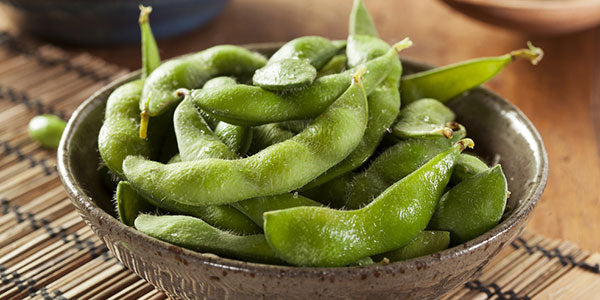
In the health world, new trends and products are constantly arising and trying to make their big debut. Some are more successful than others and rise to the top. Edamame is one of those that deserves time in the spotlight related to its nutritional value and benefits.
What Is Edamame?
Edamame comes from a Japanese origin and literally means "stem bean." It can be pictured as a peapod, although the little beans inside the green pod are actually young soybeans that are harvested before they have the opportunity to harden. Edamame is often found in the cuisines of Japan, China, Hawaii, and Korea. Edamame has rising popularity in the fresh produce sections of health stores and in the frozen aisle of other vendors.
Nutritional Value
The nutritional values below are based on the edible portion (the soybeans) and adapted from the United States Department of Agriculture's (USDA) National Nutrient Database..
To further analyze the identified nutritional values listed above, the grams of protein and fiber are truly notable. The average person needs between 50 to 60 grams of protein per day and 25 to 38 grams of fiber. Just one cup can provide, on average, approximately 33% of daily protein needs and 26% of daily fiber needs! Edamame is also an excellent source of vitamin K and manganese, providing more than 20% of daily needs. Additionally, edamame provides greater than 10% of the recommended daily intakes of magnesium, potassium, copper, iron, and folate.
Profoundly, edamame is a complete protein like meat and dairy products. A complete protein provides all essential amino acids that must be included in the diet, as the body cannot produce them itself. Although not persuading to a vegetarian or vegan lifestyle, those who follow a plant-based diet are shown to have lower body mass indexes (BMIs). Simply reducing animal products and replacing with plant proteins may reduce weight and weight gain along with its comorbidities of cardiovascular disease and type 2 diabetes.
Additionally, isoflavones (a class of phytoestrogens found in soy) contain antioxidant properties. Studies suggest that moderate consumption of soy may reduce the risk of breast, colon, and prostate cancers. Further evidence suggests women who incorporate soy products into their diet decreased the risk of breast cancer recurrence. Isoflavones also decrease bone loss and increase bone mineral density during menopause. Controversially, recent concerns suggested soy had a negative affect on male testosterone and fertility in both males and females. Currently, there is no sound evidence to avoid soy products, as its intake proves positive health associations.
How to Eat and Recipes
So with all the compelling information regarding its health benefits, you maybe thinking, "But how can I implement edamame into my diet?"
The answer is simple. The edamame pods can be boiled in water, steamed, or microwaved. Once cooked, sprinkle with a little sea salt and eat the soybeans straight from the pods. With its mild flavor, edamame can be incorporated in a wide variety of dishes - thrown into soups, salads, and casseroles. Edamame can also replace chickpeas in hummus for added protein.
Be sure to check out bistroMD's edamole recipe, that provides a unique and flavorful twist on traditional guacamole. Swapping out avocados with edamame reduces the fat content while creating a light, protein-packed version. The edamole is also bursting with fiber. You don't want to miss out on this tasty guac alternative!







